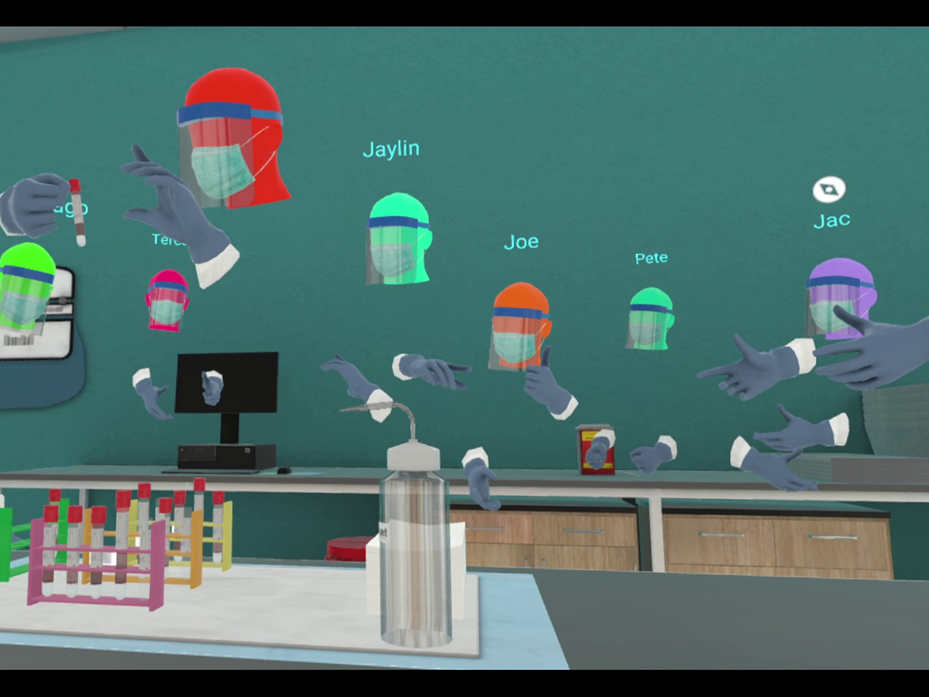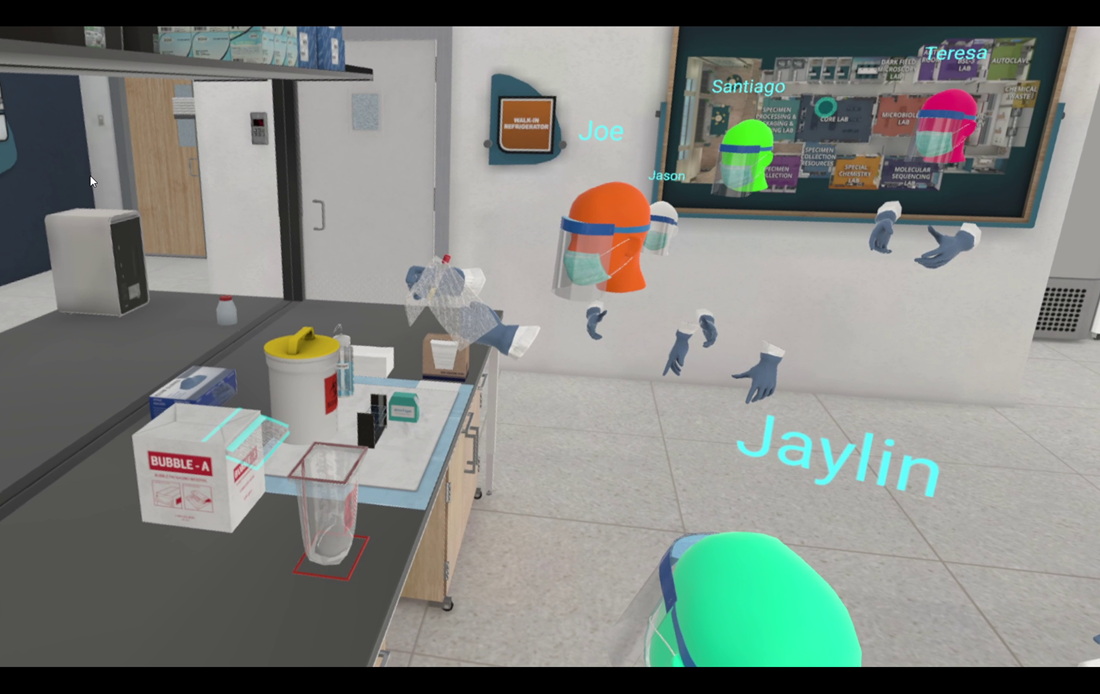Clinical Lab Education: The Role of Virtual Reality
How virtual reality technologies can support clinical laboratory education efforts and what leaders should know about implementation

Since its conception in the 1960s, much has been said of the ways in which virtual reality (VR) technologies may positively shape our futures.1 This has been especially true over the past decade, in which advancements have led to great steps toward realizing the potential of such technologies and broadening their scope—expanding beyond their prominent use in video gaming to research,2 healthcare,3 education (medical and otherwise4,5), and more.
In this climate of innovation, questions may arise for those working and training in pathology and laboratory medicine: what might VR technologies offer in the context of the clinical lab? How can laboratory managers and administrators incorporate and get the most out of these technologies in their labs? And what part might VR play in shaping the future of the field?
A virtual element of education
Many aspects of VR technologies make them an interesting prospect for the clinical lab. First, compared to their real-world counterparts, VR environments can be less expensive to build and maintain, reaching more people with less cost. Alongside this are their capabilities that extend beyond what is possible in the physical world. An example is VR’s inherent connectivity, which allows multiple users from around the world to gather and collaborate near-instantaneously, unrestricted by real-world constraints such as time, location, hours of access, or travel time. The highly customizable and quickly adaptable nature of virtual environments also makes them well-suited to running specific, contained simulations, such as training exercises—and doing so in a more scalable and distributable way.
“VR training bridges the gap between theory and real-world application by immersing learners in realistic, simulated environments where they can practice and develop their skills,” explains Joe Rothschild, who leads the US Centers for Disease Control and Prevention (CDC) Division of Laboratory Systems’ Virtual Reality Training Team. However, VR training use-cases aren’t limited only to those already working within the field. In fact, Rothschild believes that these technologies are a great outreach tool for connecting with those considering a career within the lab. “VR can also introduce the next generation of workers (elementary, middle, and high school students) to the possibility of a career in a clinical or public health laboratory.”

For Rothschild, hands-on lab training is an area in which VR technologies are especially able to shine. “Learners can safely practice their skills in a virtual laboratory, reinforcing what they have learned through traditional training methods without the need to work in—and then decontaminate—active laboratories or use costly supplies,” he says.
It’s this utility that has led him and his team to develop OneLab VR, a 50,000-square-foot virtual facility created for clinical and public health laboratory training.6 At present, the virtual space contains 12 laboratories and over 100 pieces of laboratory equipment, although these numbers are ever-expanding. It offers trainers the ability to create their own environments so that trainees can interact with each other in real time from across the globe. Learners can also access a continually growing suite of on-demand three- to 10-minute microlearning scenarios designed to quickly familiarize users with laboratory equipment, safety, and procedures.
“Traditional training methods often rely on post-training assessments or evaluations, but VR training can offer real-time assessment,” explains Rothschild. “Trainers can observe learners’ performance within the virtual environment, provide immediate feedback, and track progress.”
Stepping into the virtual
Incorporating new and emerging technologies into the clinical lab can be a complex task7 that requires in-depth assessment of the tool and its ability to meet an individual laboratory’s specific needs. Although implementing VR is no different, for those considering it, the barriers to adoption are lower.
“From my experience, all it takes to bring VR into an institutions’ curriculum is to get laboratory partners and leadership under the headset,” says Rothschild. “VR is an amazing modality and trainers can immediately see the use and need for it.” Beyond this, he emphasizes the fact that it provides an opportunity for laboratory leaders to train their staff in a manner that is both safe and cost-effective—all that’s needed to get started are VR headsets, internet connections, and adequate space. And, for those with IT or security concerns, the headset can be made into a standalone device after setup by disabling Wi-Fi and deleting any associated apps from previously connected devices. OneLab VR takes this further by securing multiplayer training sessions with a custom four-digit PIN only available to the instructor and those they share it with. Standalone scenarios are secure because the learner is alone in the environment as they complete them.

Rothschild’s primary advice for both those considering incorporating VR tools into their lab’s training roster and those who have already done so: be intentional about how you use VR. As with all tools, these technologies are not one-size-fits-all.
“VR training is not meant to replace traditional training options such as e-learning or hands-on training. Rather, it complements them,” Rothschild explains. “Using VR to train staff on how to complete an incident report may not be the best use of it. Instead, trainers should consider what hands-on activities they would like their learners to practice before stepping into a laboratory. By combining traditional and virtual training, laboratories can create a comprehensive and effective training program that enhances learner engagement, promotes practical application of knowledge, provides realistic experiences, and delivers measurable training outcomes.”
The future is (partially) virtual
As VR becomes more widespread outside the clinical lab, it seems almost inevitable that its role inside the lab will grow as well. From public health emergencies (which demand diverse and effective distance-based education) to routine training (which must be quick, efficient, and easily accessible to meet busy professionals’ needs), VR is already offering solutions to a number of issues the laboratory faces. These benefits will likely only become more prevalent as VR technology continues to evolve and clinical laboratory professionals find new ways of benefiting from it.
References:
- Cipresso P et al. The past, present, and future of virtual augmented reality research: a network and cluster analysis of the literature. Front Psychol. 2018;9:2086. doi:10.3389/fpsyg.2018.02086.
- Garrett B et al. Virtual reality clinical research: promises and challenges. JMIR Serious Games. 2018;6(4):e10839. doi:10.2196/10839.
- Javaid M, Haleen A. Virtual reality applications toward medical field. Clin Epidemiol Glob Health. 2020;8(2):600–605. doi:10.1016/j.cegh.2019.12.010.
- Logeswaran A et al. The role of extended reality technology in healthcare education: towards a learner-centered approach. Future Healthc J. 2021;8(1):e79–e84. doi:10.7861/fhj.2020-0112.
- Rojas-Sánchez MA et al. Systematic literature review and bibliometric analysis on virtual reality and education. Educ Inf Technol (Dordr). 2023;23(1):155–192 doi:10.1007/s10639-022-11167-5.
- Centers for Disease Control and Prevention. OneLab VR. https://reach.cdc.gov/onelabvr.
- Huang W et al. Clinical application of intelligent technologies and integration in medical laboratories. iLABMED. 2023;1(1):82–91. doi: 10.1002/ila2.9.
Subscribe to view Essential
Start a Free Trial for immediate access to this article